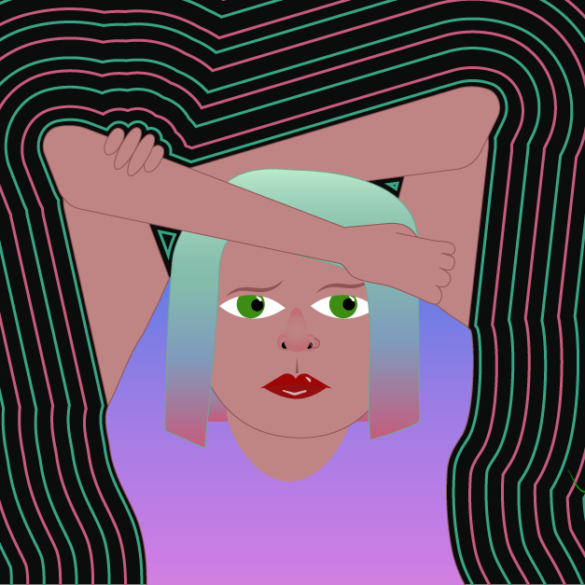Phobias range from being afraid of spiders to small spaces, but each can make life difficult.
When Yating Fang, a student at Purdue University, sees a cluster of holes, she feels immediate disgust. Even seeing several iPhone apps organized into folders, which can resemble holes, makes her squirm. But her reaction might not be as unusual or quirky as it seems.
This reaction relates to trypophobia, the fear of holes. According to the Association for Psychological Science, in a study conducted by researchers Geoff Cole and Arnold Wilkins, 16 percent of participants experienced reactions like Yating’s when confronted with trypophobic images and patterns. But not much research has been done to help us understand this phobia.
Hanna McCabe-Bennett, a doctoral student of clinical psychology at Ryerson University, says the distress and interference phobias cause set them apart from regular fears. People with phobias go out of their way to avoid their fear. Many people fear spiders, for example, but individuals who take the time to research spiders in their area have phobia-like tendencies.
McCabe-Bennett says common phobias are grouped into categories with evolutionary roots to different objects and situations that harm humans. Some phobias might stem from having bad experiences or witnessing the experience of others. They can develop at any point in life, sometimes without an identifiable trigger.
Nine percent of people in the United States experience phobias, according to the Anxiety and Depression Association of America, making it the most common anxiety disorder.
Research on trypophobia led Cole and Wilkins to believe that trypophobia could come from a visual feature of some poisonous animals. They think the fear, like some other phobias, could be a leftover evolutionary device meant to protect us from poisonous animals that resemble a cluster of dots.
Cole called trypophobia the “most common phobia you have never heard of.” Even participants in the study who didn’t have the phobia rated trypophobic images as less comfortable to look at.
So to a certain extent, even without the phobia, a fear can still exist that may be fairly similar. While not full-blown phobias, they do exemplify many traits of a phobia.
Bria Matemane, a student at Ball State University, used to think she might have mysophobia, commonly referred to as germophobia. This started when there were rumors at her high school of an H1N1 outbreak, which made her have a stricter cleaning routine. Bria wipes her phone clean almost every day and tries to clean her purse every week. During times when sickness spreads quickly, she makes an effort to sanitize shared items in her work area like keyboards, seats, and tables.
Bria is wary of germs, but she isn’t compulsive with a cleaning routine, which means she doesn’t necessarily have a phobia. She isn’t concerned about keeping everything sanitized—she just focuses on cleaning everyday objects to avoid illness.
McCabe-Bennett says people can usually tell if they have a phobia without an official diagnosis. But psychologists can also help patients differentiate between phobias and other conditions, like post-traumatic stress disorder.
According to the Mayo Clinic, phobias can cause an automatic sense of fear, anxiety, or panic when the person sees or thinks about the trigger. Most people with phobias realize their fear is extreme or irrational, but they can’t control it. They might also experience physical symptoms like sweating, increased heart rate, chest tightness, and difficulty breathing.
Fear and anxiety give humans an evolutionary advantage to avoid harm, but phobias are counterproductive. That level of fear is more harmful than it is helpful.
In Bria’s case, her actions stem from a fear of getting sick, which is actually beneficial to her health. She might be a little more aware than the average person. But she isn’t compulsive about it, so its effects net more positive than negative—and that’s the difference.
As researchers learn more about the origin of phobias, they can develop new forms of treatment. So far, treatments range from behavioral to pharmaceutical remedies aided by the use of technologies like positron emission tomography (PET) and functional magnetic resonance imaging (fMRI) to evaluate brain activity. PET scans are used to detect diseases in the body while an fMRI monitors brain activity.
McCabe-Bennett says phobias are one of the easiest disorders to treat. A common method is exposure to the source of fear, which causes anxiety but shows the patient that the feared outcome probably won’t happen.
Yating is able to deal with seeing clusters of holes in her everyday life by doing her best not to look at trypophobic images. If she does see them, she tries to distract herself in order to stop thinking about it as soon as possible. Out of sight, out of mind, it seems.




